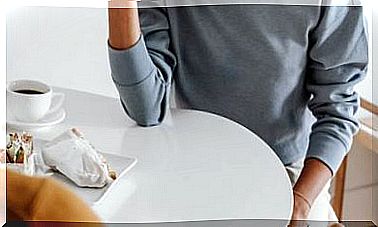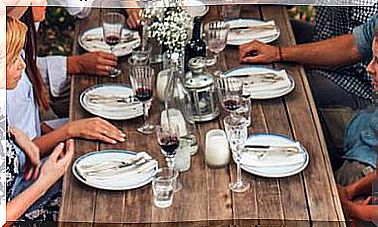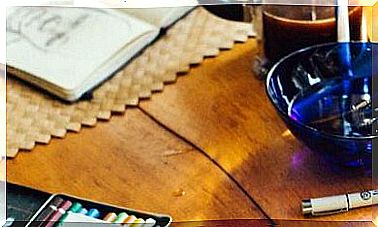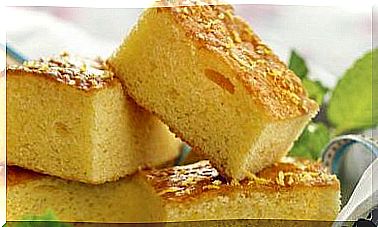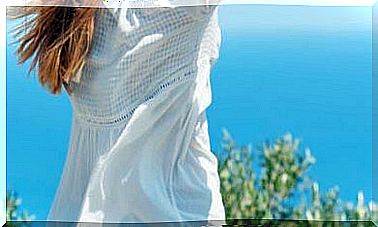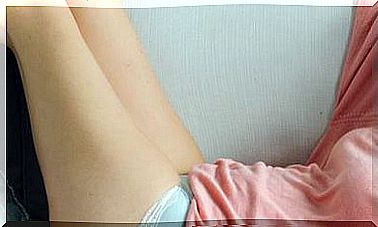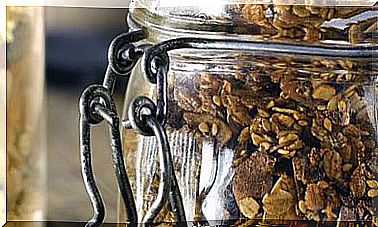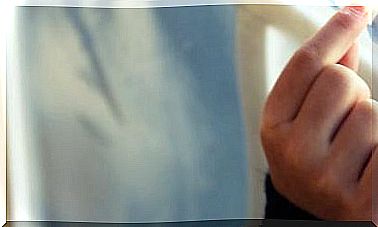“Facial Yoga Connects Us With Our Inner Beauty”
Facial yoga is more than exercises for the face. It is a care routine that relaxes, makes you more aware of your own facial expression and helps you love yourself more.

The face is full of small muscles that we can exercise. By working those muscles in an orderly way we can firm the skin, prevent the appearance of fine lines and even reduce the presence of wrinkles. But if we also put all our attention on it, coordinating these anti-wrinkle exercises with breathing, the benefits go further.
It is the basis of facial yoga for which the Canary Diana Bordón, author of the book Yoga facial: another beauty is possible, was passionate . She started out concerned about preventing her wrinkles and ended up traveling the world training in a wide variety of oriental techniques, from vipassana meditation to Thai massage, jade stone facial massage to facial reflexology. He also traveled to New York to train with Annalize Hagen, a pioneer of this discipline in the United States.
This extensive and eclectic training allowed him, over the years, to develop his own method of facial gymnastics, which he called the Facial Yoga Plan, a method with a holistic approach that, in addition to exercise routines to work directly on the muscle and tone it, gives great importance to breathing and includes different techniques of facial self-massage, both manual and with a jade roller or with guasha (a quartz stone used in Chinese medicine).
Diana Bordón is also a facial yoga trainer and ten thousand people have already attended her courses in Spain. Along with exercises to firm the skin of the face and neck, it has also developed exercises to improve hair health and specific exercises for the male physiognomy.
Facial yoga, more than exercises for the muscles of the face
– What is facial yoga?
–One of the parts of the body that most reflect the passing of the years is the face. We are all aware that if we do not exercise the body, the muscles become flabby and weak. Well, the same thing happens with the muscles of the face. With facial yoga we work on a basic principle: the muscles of the face are not different from those of the rest of the body, they are simply smaller.
To exercise them, in addition to exercise routines to directly work the muscle and tone it, we can resort to different techniques of facial self-massage, both manual and with a jade roller and Guasha. And always from the neck to the forehead. Performing loose exercises does not give results: the face must be toned equally, because the facial muscles are like a network and are united.
– You have created your own method … where do the techniques you apply come from?
–Yes, I call it the Facial Yoga Plan, which helps care for the face, oxygenate the body and improve health by combining different ancient methods of health and beauty: Kobido, guasha, jade roller, conscious pranayama breathing, acupuncture …
All these techniques work separately, but my method, and my challenge, is to have been trained in all of them traveling the world and to unify them so that the different micromuscular packages of the face work in an orderly way. Thus a harmonic toning is achieved.
“My challenge was to unify all these techniques so that different micromuscular packages of the face work in their proper measure.”
– Why do we talk about “yoga”? Would you say that these exercises are more than just physical exercise?
– I am very happy that they ask me this question because until now they have never asked me and I will answer you with all my love and enthusiasm.
The facial yoga that I propose is more than physical exercise so as not to age. It is a way of life, a daily routine that, like body yoga, connects with our interior. In this case, it connects us with inner beauty : not only movements are made that tone the muscles, it is learned through conscious breaths to connect the mind with facial expressions, with emotions.
Learning to respect the face and become aware of its expressions even helps to improve emotions …
–How can facial yoga improve emotions?
–To give you an example, imagine that you start a yoga class because you don’t have strength in your back and your neck hurts and you walk with your shoulders slumped. Once you start practicing your yoga asanas and have been for a while, you become aware of your body and your posture, and you stop walking with your shoulders slumped and place your shoulder blades in place in a conscious and controlled way.
The same thing happens when you start to practice facial yoga: you go from not having control of your facial muscles, from doing involuntary movements to controlling and being able to command your facial muscles how you want them to be positioned.
Without a doubt, with the practice of both exercises and massages, you connect directly with the energy of your face through your hands. This, added to the breath, helps you every day, little by little and without realizing it, to connect with your inner strength, with love for yourself.
In the end, it is not just about having a good physical appearance: the face should be a reflection of our heart.
Exercising your facial muscles to reduce wrinkles
–The mainstay of facial yoga is muscle toning. Why should we worry about toning the muscles of the face?
–Toning the facial muscles is just as important as toning the muscles of the body. A well-toned orbicularis, a very hard forehead and a very firm neck is the same as working biceps or glutes.
There is the option of not doing it and seeing how flaccidity wins the battle or else working the facial muscles and achieving a better tone, with a skin adhering to the muscle and a muscle placed in place to avoid the appearance of wrinkles. Fine lines appear when the muscle is weak and flaccid.
– Most people will approach facial yoga thinking about preventing or eliminating wrinkles. But does facial yoga have any other effect on the skin, beyond making it smoother through muscle toning?
–Facial yoga rejuvenates, activates and tones the muscles of the face and prevents sagging and the appearance of wrinkles. But it also relaxes and releases stress, improves breathing and improves the circulation of blood and oxygen that circulates through our face.
–One of the variants of facial yoga is hair yoga… How can facial yoga techniques favor hair care?
– I consider that the area of the head has been the great forgotten one. We have been very concerned about cleaning, hydrating the face … but the scalp has never been touched enough. That is why we must also become aware of this area of our body: in it we also accumulate tension, stress and emotions. And the quality and health of our hair also depends on it.
Capillary yoga, by raising awareness of this area with massages, allows to oxygenate and stimulate blood flow .
“We also accumulate tension, stress and emotions on the scalp.”
– Could you recommend an exercise to start practicing?
–To start practicing a single exercise is not suitable. The face is made up of a set of muscles that, in addition, intertwine and support each other. My method, the Facial Yoga Plan is precisely characterized and differentiated by its holistic approach, in which the whole is worked, and not the part, to achieve a lasting and harmonious beauty through all the facial muscles, the skin and the breath. . And it is done by working the muscles from the neck to the forehead, in order to have the optimal results according to the age range.
What we can do, once we have started in yoga, is to focus on different parts of the face. For example in the look, which now with the mask we are forcing a lot. For this you can try my ERE method: Elevate your eyes, Fill crow’s feet and Eliminate bags ( see box at the end of this interview ).
– Is facial yoga better to do in the morning or at night?
– Each person is different and the important thing is to find a fixed routine. In addition to exercises, massages are an important part of facial yoga.
For massages, I recommend creating a pleasant atmosphere, for example, at night, after having cleaned and hydrated the skin for facial massages, because in addition to providing luminosity, they work on muscle and mental relaxation.
– How often do you have to practice it?
–Everyone can do the simple exercises of facial yoga: it only takes between ten and fifteen minutes a day, 4 times a week. Rest is essential too. The facial muscle should rest like the rest of the body when exercising.
You can practice in front of the mirror, in the car, watching TV. With practice and perseverance, the results are noticed as in any physical activity. The older you are, the more time you will have to dedicate, of course, and the results will take a few months of practice, as in any physical activity, but they arrive, with greater facial toning and skin well-being. And it is never too late to start.
“Rest is essential too. The facial muscle should rest like the rest of the body when exercising”
– And from what age would it be advisable to start?
– If we start with 30 years, as I started, what you will do is keep your muscle tone toned, as if frozen in time. If you start with 45 and you already notice the effects of sagging, with practice you will begin to regain muscle tone and this will help you to smooth expression lines and regain the firmness of the skin.
The sooner you start, without a doubt, the effects will be more visible in less time, with which we could start even from the age of 25 onwards.
But to see the results there are several factors, and one is age. Also constancy. This is not a magic wand. It is the same as when you go to the gym: if you start at 30 years old and go 3 or 4 times a week, in three months you will start to notice the results, a stronger abdomen, more resistance … If you enter with 40, you will need some 6 months of training and, if you go over 50, your muscles are weaker and it will take you more months to get in shape.
I always encourage you to start now: no matter how old you are, the important thing is that you start with the exercise routine and be consistent.
– Do you need any tools?
– No, you only need to have well hydrated skin and your hands. It is the basis: using our hands to perform resistance and toning exercises, as well as facial massages. And above all, be consistent with the routine to be able to see the results in a few weeks.
If we want to enhance the results of the practice, then we can include the use of the jade roller in the routine at night and accompany it with the guasha. But I want to make it clear that the use of the jade roller and the guasha, without a good facial training, does not tone the muscle, as it is being heard, and it will not mitigate wrinkles if the muscles continue to be weakened. Roller and guasha tools are a complement to facial training.
ERE method: facial yoga exercises to firm the eye contour
Diana Bordón’s ERE method is part of her Yoga Facial Plan and consists of a series of exercises that specifically affect the eye contour. ERE is the acronym for: Look up, Fill crow’s feet, Eliminate bags.
To raise your gaze:
- Rest the middle and index fingers straight, just above the eyebrows (in the middle) and apply light pressure.
- Open and close your eyes noticing the resistance of the fingers that prevent the eyebrows from rising.
- Repeat this movement for 3 sets of 15 blinks.
To stuff the crow’s feet:
- Place your thumb and index finger on the sides of the eyes in the crow’s feet area, exerting light pressure. When you open and close your eyes, a resistance is generated that prevents them from closing easily; that’s where the muscle works.
- Repeat this movement for 3 sets of 15 blinks.
And to remove bags:
- Place the index and middle fingers in a V-shape on the eyebrow and on the lower eyelid, without touching the bags. Apply slight pressure.
- Open and close your eyes while the V-shaped fingers make resistance to the inferior orbicularis muscle, very gently.
- Repeat this movement for 3 sets of 15 blinks.
